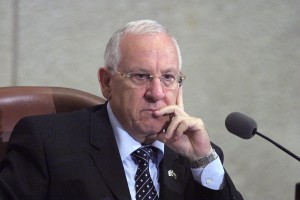by Emile Nakhleh
As the killing and destruction rages on in Gaza, and as Israeli Prime Minister Benjamin Netanyahu and the Hamas leadership exchange recriminations and threats, key regional and world players must accept a central truism: No peace can be achieved between Israel and the Palestinians without including Hamas. The quicker they internalize this fact, the faster the cycle of violence can be broken.
The Gaza wars have failed to liquidate Hamas; on the contrary, Hamas has emerged stronger and better equipped despite the pummeling it frequently receives from Israel.
At the same time, Israel’s assault on Gaza reflects Tel Aviv’s concern about the region as a whole, not just about Hamas. Such concerns are driven by the rise of Islamic radicalism in Gaza and across the region, the growing influence of right-wing radical Jewish groups and political movements in Israel, the brutal civil war in Syria, the collapsing state structures in Libya and Yemen, a failing state in Iraq, the marginalization of the Palestinian Authority (PA) leadership in Ramallah, and the fragile political systems in Lebanon and Jordan.
Israeli worries also stem from a resurgent Iran, a potential nuclear agreement between Iran and world powers, and the perceived diminishing influence of the United States across the region. Unable to influence these “seismic shifts” in the region, Israel has resisted any long-term workable accommodation with the Palestinians as well as ending its occupation of Arab lands.
The Obama administration and other governments must work to end the 47 year-old occupation of the West bank and the blockade of Gaza. The Gaza Strip is considered the world’s largest open-air prison, blockaded on three sides by Israel and on one side by Egypt. This economic and political encirclement must be broken if the economic and social conditions of Gazan residents are to improve.
Poverty, unemployment, poor health and hygiene, and a lack of power and clean water have generated anger and hopelessness, which have often resulted in the frequent firing of rockets toward Israel. While mostly ineffective, these rockets have terrorized Israeli residents in the southern part of the country. This too must stop.
The bloody confrontations between West Bank Palestinians and the Israeli forces in Jerusalem at the Kalandia crossing, and between Arabs in Israel and Israeli police demonstrate that the Gaza war has spread to other parts of Palestine. This bodes ill for Israel and neighboring countries.
Israel’s glee at the Egyptian government and media’s enmity toward Hamas is ephemeral and transitory. The Sisi autocratic regime would be unable to withstand its people and other Arabs’ anger at what they view as Israeli aggression against the Palestinians.
Having followed this conflict, including the rise of Hamas, for decades, both in academia and in government, and having briefed senior officials on these issues for years, I argue that long-lasting peace between Israelis and Palestinians will remain elusive unless regional and global leaders begin to re-examine their decades-old assumptions about the conflict.
Such a step would be severely criticized by partisans from, and on behalf of, both sides, including many in the US Congress. Therefore, courage, perseverance, and new thinking are needed to empower stakeholders to push the process forward.
Hamas and Israel
Destroying Gaza, killing thousands of innocent civilians, blowing up Hamas tunnels, and liquidating its leaders will not eradicate Hamas or silence its drive against the Israeli blockade. Hamas draws strength not from its religious ideology but from its resistance to the encirclement, which has strangled and impoverished most of the 1.6 million Palestinians in the Gaza Strip.
The current Israeli war on Gaza plus the two previous ones in 2008-9 and 2012 have not really been about the perceived existential threat Hamas poses to Israel. These conflicts have been rooted in the failure of the so-called peace process.
The asymmetry between Israel’s military might and Hamas’ weaponry, which includes homemade and home-upgraded rockets, cannot possibly allow Hamas to pose a credible mortal threat to Israel. The terrorizing of civilians along the Gaza-Israel border is abhorrent and must not be tolerated, but it is also not an existential threat to Israel, nor does it justify Israel’s massive bombardment of residential neighborhoods, hospitals, and schools in Gaza City and across the strip. Israel could easily destroy the tunnels on both sides of the border without destroying thousands of homes and reducing Gaza to rubble.
The Israeli assault could also be seen as a response to the recent reconciliation between the PA administration in Ramallah and Hamas in Gaza and the formation of a Palestinian national unity government of technocrats. The support the US and EU showed for the new Palestinian government concerned Netanyahu deeply, and he proceeded to torpedo it. Netanyahu’s Gaza war belies his claim that he was genuinely looking for a so-called Palestinian “partner.”
Precursor to Hamas’ Tunnels
The Bush administration and the Israeli government supported holding elections in Gaza in January 2006, which Hamas won fairly and convincingly. Both Washington and Tel Aviv were stunned by the results and proceeded to delegitimize the election results and torpedo the new Hamas administration.
Gazans voted for Hamas not because of its religious ideology but because of its community service and resistance to the Israeli blockade. The legendary corruption of the PA administration in Ramallah also underpinned the vote for Hamas.
The morning after the election, a few senior members of the Bush administration advocated giving Hamas a chance to engage Israel on practical issues, including travel permits, the power grid, water, and commerce. If Hamas failed to do so within a couple of months, these officials argued, the United States and Israel would pull the rug from under Hamas.
That argument, which according to media reports at the time, was favored by President Bush, lasted for one day. The counter argument favoring an immediate isolation of Hamas, which was strongly advocated by neoconservatives in the United States and in Israel, carried the day.
The Gaza wars in 2008-9, 2012, and now are arguably a direct result of the refusal of Israel and the United States to accept the 2006 election results and engage Hamas. Had engagement occurred, the living standards of Gazans would have improved markedly; there would have been no need for a “tunnel economy” or a “tunnel military.”
Unfortunately, Israeli politicians today seem to be viewing Hamas and the continued occupation and encirclement through the same narrow prism of 2006.
The Way Forward
In a recent article on this blog I argued the two-state solution was dead and called for new thinking. The same applies to the current conflict.
After 47 years of occupation, nine years of blockading Gaza, two intifadas, and three wars, Israel, the Palestinians, and the United States must accept the fact that war, terrorism, and occupation cannot solve the Israeli-Palestinian conflict.
With the death of the two-state option, the peaceful coexistence of Israelis and Palestinians between the Mediterranean Sea and the Jordan River can only be achieved through a new paradigm grounded in justice, human dignity, equality, and tolerance.
Including Hamas in talks for an enduring end to the conflict could be done through a joint Palestinian delegation comprised of the PA, Hamas, and other factions. For this approach to succeed, however, it must include an end to the blockade of Gaza.
Once the two peoples living together embark on this path, they will reject the logic of occupation and terrorism and focus on building a more hopeful future.
For its part, the United States should jettison all futile attempts to push for a so-called peace process. Rather, we should begin serious efforts to help the two peoples operationalize the new paradigm.
Photo Credit: Iyad al Baba/Oxfam






Here is a novel idea. Why not stop the flow of illegal rockets and weapons to Hamas from Iran? That would be a sure fire way to stop the slaughter.
A well researched and well argued article. the suggestions are logical and sound, hwever and most unfortunately rather impractical. It would have been a Road Map to follow but only if NeoCons then and NeoCons now did not have a deciding say in the Israel and the US. Fortunately NeoCons are not in complete control and sometimes there are cracks that logic and common sense may seep through; they failed to convince President GW Bush to attack Iran and failed to convince President Obama not to negotiate with the same country despite the NeoCon efforts to the contrary. Let’s hope and pray that even here they do not prevail.
The present conditions in Gaza are historically an equivalent of siege of Stalingrad by the armies of Hitler. The inhabitants resisted despite being driven to cannibalism but finally were able to conquer over the tyranny and turn the course of history. May be we are witnessing a similar historical events now. It is true that sometimes “Blood May Win over the Sword”
This is a good article, good points too. A novel way to stop the slaughter? How about a non-emotional way, like not shooting fish in a barrel, which is what’s going on today? As this continues, more is brought to light, as far as the Netanyahoo element goes. The more that does become exposed, the more one has to ask why the humanitarian people who call for human rights, don’t seem to be heard except on the blogs, then only to those who seek them out? The history books will tell the tale, until even that is revised by the apologists.
Let’s see, Hamas uses civilians as human shields and Israel bombs them anyway. I don’t see any winners on either side.